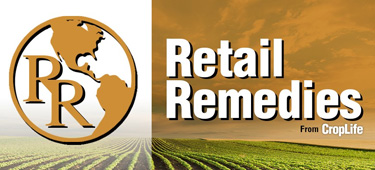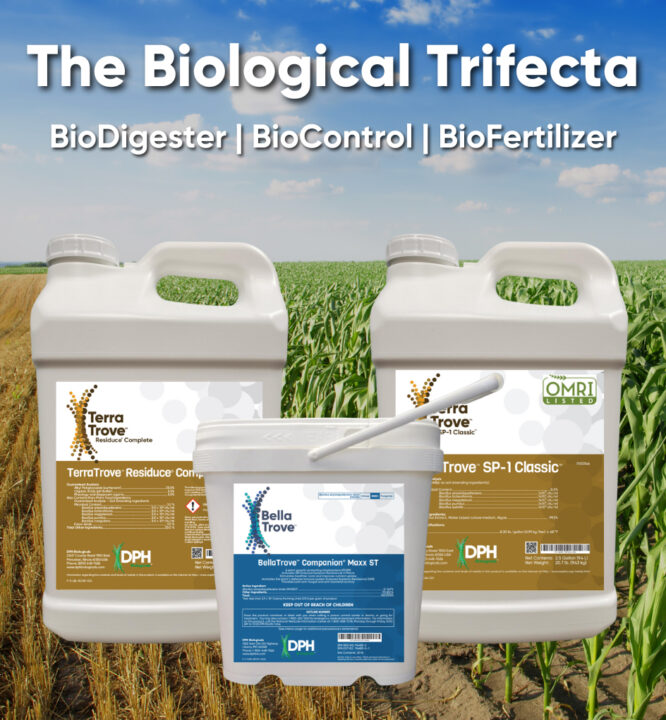Retail Remedies: How Adjuvants Are the ‘Heavy-Lifters’ of Weed Control in 2022
 Editor’s note: This article is part of CropLife’s new series called Retail Remedies. In Retail Remedies content, we offer solutions and strategies for ag retailers to present to their grower-customers to make dealing with all the uncertainty of the 2022 planting season more manageable. This will include stories on product segments — like the adjuvants feature below — that can help growers stretch their hard-earned dollars in this time of higher crop input costs.
Editor’s note: This article is part of CropLife’s new series called Retail Remedies. In Retail Remedies content, we offer solutions and strategies for ag retailers to present to their grower-customers to make dealing with all the uncertainty of the 2022 planting season more manageable. This will include stories on product segments — like the adjuvants feature below — that can help growers stretch their hard-earned dollars in this time of higher crop input costs.

After a year caught in a mess of logistics and prepay situations, ag retailers and growers are looking for ways to find the most bang for every drop of herbicide on which they have managed to get their hands in 2022. Now, it’s almost go time.
“Adjuvants are going to have to do our heavy lifting for us this year — I can’t stress that enough,” says Ryan Wolf, agronomist with WinField United. “With glyphosate and glufosinate shortages, a lot of our conversations are with people trying to trim rates and conserve product to stretch that molecule across more acres, whether it’s guys trying to shave their usual quart down to 28 oz. in a pass or just using glyphosate for the grass component of weed control and letting dicamba and 2,4-D handle the broadleaf control of the application.”
Dr. Michael Kenty, Product Specialist with Helena Agri-Enterprises based in Memphis, shares his fear that some products will not be available in the quantities desired this year.
“We’re telling (retailers and growers), we can’t always guarantee we are going to have 100% of what you want; you might have to substitute. If it costs $5 to $10 to control weeds, you spend another $1 to $1.50 to make sure every bit works and you don’t waste any of it. I think there’s a lot of concern that if they don’t get as much value of the herbicide dollar they spend, they know if they get behind the weeds they will lose all the way around.”
From a weed control standpoint, the worst decision is to make a mistake up front in not using the correct herbicide and adjuvant rates, Kenty says. “If you create a re-treat situation, there may not be anything to re-treat with, unless you want to pay for chopping weeds. Last I checked, it’s $100 to $105 an acre — that’s a lot of money for manual weed control. The same applies to insecticides and fungicides, because they’re tight as well.”
He tells CropLife® he is surprised at how little pushback he has gotten, notably from growers in Texas and Oklahoma, on adjuvant requirements for the various products they might find themselves using as part of a plan B or C, if they aren’t able to get all the herbicides they want.
We spoke as Kenty was about to head out to conduct presentations on adjuvant use for consultant groups, first in Mississippi and then Louisiana, and again as he was returning home. He shares that he is hearing consultant and grower attitudes change toward adjuvants: They are becoming much more open to them.
“Historically, in the mid-South, people have been skeptical of adjuvants. But even consultants are starting to ask questions, because their client bases are starting to want more information,” he explains.
At the talks he had just finished giving, he noted that his audience didn’t look down at their phones, as some typically do when he or another rep gets up to speak at the podium. “They weren’t looking at their phones, because I think they’re finally realizing if they don’t make the right recommendation, they’re going to be in a world of hurt.
“It’s always been drift (as the main driver for adjuvant use). But now, the message is resonating to use a water conditioner, use a surfactant, use a compatibility agent. Accept that you may need more than one adjuvant in the spray tank. Even in my sidebar conversations with consultants and a lot of the basic and tech and R&D reps, they’re all saying the same thing, which is a change, because normally they focus more on the active ingredients,” Kenty adds.
Hot Products
While adjuvants obviously aren’t going to provide weed control themselves, they will enhance it, Wolf stresses. He highlights four types expected to be in high demand this year:
AMS water conditioners: These will be very important in ’22, as they protect many herbicide molecules, including glufosinate and glyphosate, from interacting with any cations in the tank or on the leaf surface. “We can’t afford to tie any chemistry up in the tank or on leaf surface,” Wolf says.
Surfactants: “Last year when we saw (prevalent) dry weather, people thought oils would have been the best, when actually surfactants shined in their ability to spread the droplet across the leaf and slow down drying of the droplet,” he explains, adding, “As we get into more concentrated formulations, a lot of manufacturers have taken out the extra surfactants in formulations to get more active ingredient in them, so we’re not using as much. Surfactants become a huge play.”
Oils: Because other chemistries besides glyphosate and glufosinate are being used, such as the Group 1, Section Three (from WinField United) clethodims, “those grass-killing herbicides are very oil-loving,” he says. For Group 27 herbicides for corn, oils become a huge factor. “Even if you want to soup up your weed control on the 2,4-D/dicamba acre, and you’re trying to make those work harder on broadleaf weeds, oils are going to help you in that scenario,” he notes.
Deposition aids: According to university research, just 33% of glyphosate sprayed hits the target. “We are promoting InterLock adjuvant to try to get droplet size and deposition we need to get more AI on the plant; if we can get more AI on the plant, you’re going to get better weed control,” he says.
For 2022, WinField United has also launched UltraLock adjuvant, an all-purpose drift and deposition aid for the 2022 season, aimed at managing herbicide resistance, enhancing herbicide drift prevention and helping growers achieve better weed control.
The product combines its drift reduction agent (DRA) with InterLock, a drift reduction technology (DRT), to improve spray deposition. The result is 20% more leaf coverage than other DRAs, allowing more product to be intercepted by the plant for better weed control, the company says.
According to a Southern Illinois University study, for every inch of weed growth, farmers give up an average of 4.8 bushels in yield. At today’s prices, that’s $30 to $60 in lost revenue per acre.
“Using full rates of herbicides with quality adjuvants improves leaf coverage, and herbicide efficacy can make constrained supplies go further,” Andy Braunshausen, vice president of crop protection marketing for WinField United says. “Getting an application right the first time with residual herbicides and the right adjuvants is crucial to reduce crop/weed competition, decrease the weed species present, and narrow weed seed distribution to improve control and optimize yields.”
Ten years of field and lab testing culminated in the 2021 launch of Accomplice, Attune Agriculture’s adjuvant designed specifically for row crops to manage both drift and improve pesticide performance and formulated for maximum compatibility across the spectrum of conventional pesticides. It’s U.S. EPA-approved as a tank mix partner for use with Enlist One (Corteva Agriscience), Engenia (BASF), and XtendiMax (Bayer), and provides 30% greater drift control than four leading DRAs in aerial applications, according to the company.
Whereas traditional chemistries such as silicones and nonylphenols reduce surface tension and spread droplets on the leaf, “we’ve gone at it in totally different direction. We don’t want drops to spread out too much — we want them to bead up on the leaf surface. That reduces the amount of evaporation just by beading up as opposed to spreading out,” says Ed Quattlebaum, director of product development for the Boca Raton, Fla.-based company, which specializes in hydrocolloid technology.
“We get more spray volume on the plant because we have humectants; we increase the amount of time that the droplet has a liquid interface with the plant, and we get increased absorption.”
Quattlebaum adds, “Distribution is very concerned about whether there’s going to be enough glyphosate and glufosinate. Everybody I talk to paid double in 2021 versus 2020. Experts predict that prices in 2022 will be twice that of 2021,” he says. “We need to be focused on how we can conserve as much of the active ingredient and optimize its utility.”
See all Retail Remedies content here.






